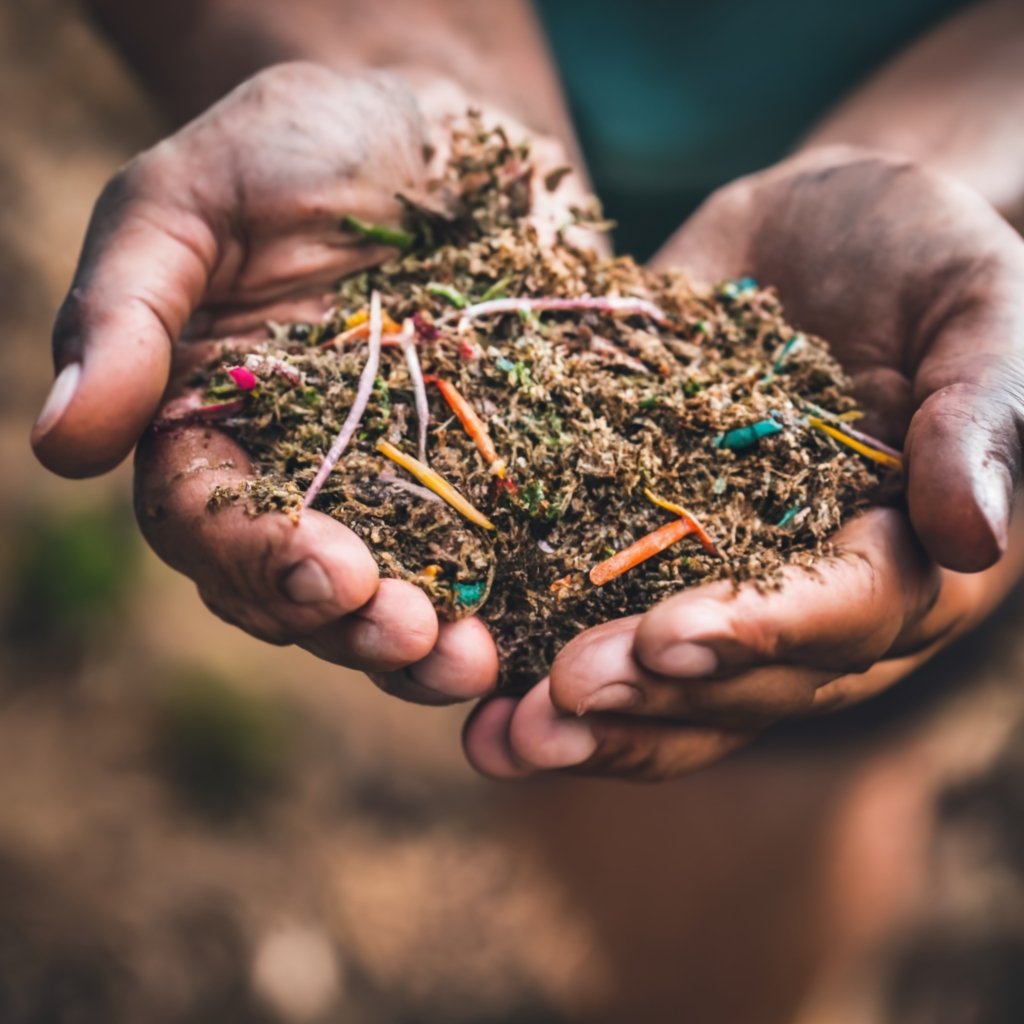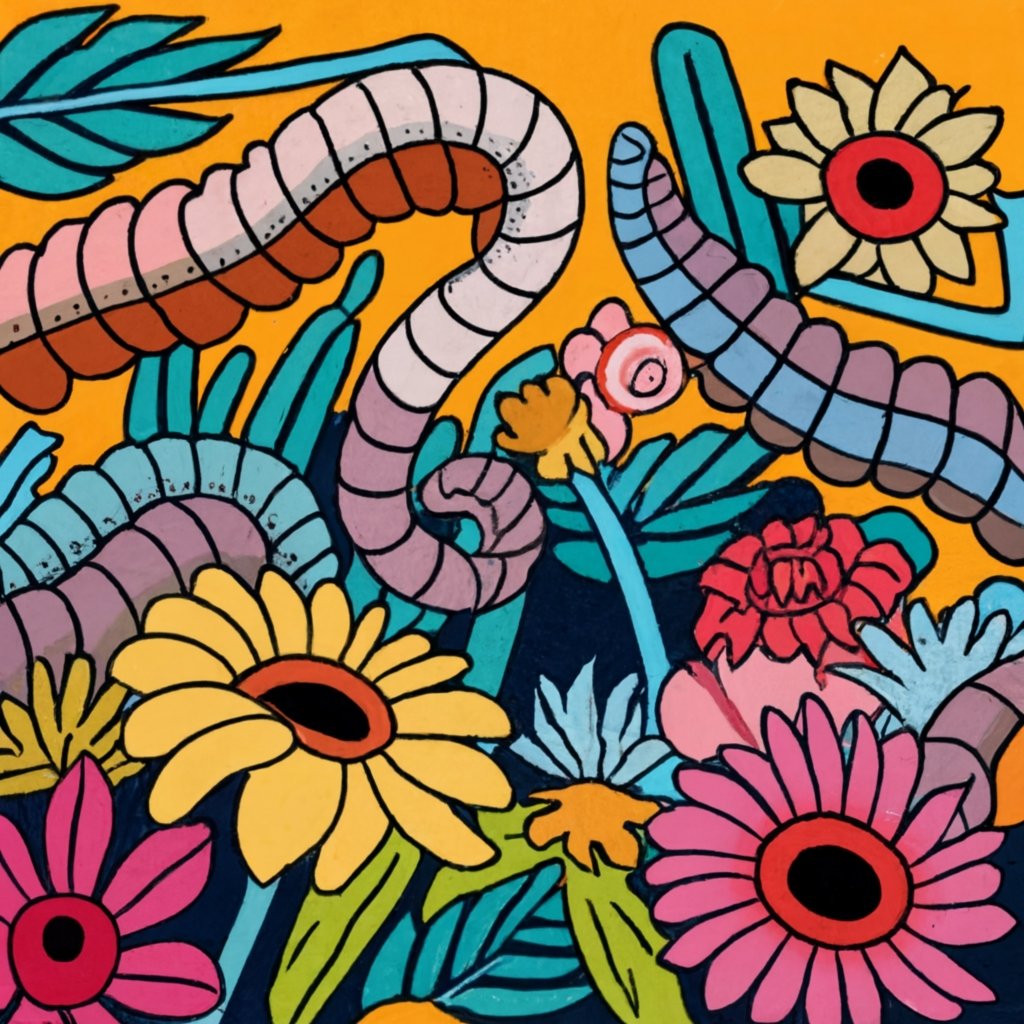Table of Contents
Indian Blue Worms, also known as Perionyx excavatus, are a species of earthworms that are commonly used for composting. These worms are native to Asia and have been used for centuries in traditional farming practices. They are epigeic, which means they live on the surface of the soil and feed on decaying organic matter.
Indian Blue Worms are excellent composters and can process a wide range of organic materials. They are known to be more active than other composting worms and can process waste faster. They are particularly well-suited for warmer regions, such as tropical and subtropical areas. Indian Blue Worms can tolerate temperatures ranging from 40-90 degrees Fahrenheit, making them a great option for composting in a variety of climates.
Overall, Indian Blue Worms are a valuable addition to any composting system. Their ability to process a wide range of organic materials and their adaptability to different climates make them a popular choice for composters around the world.

Understanding Indian Blue Worms
Indian Blue Worms, also known as Perionyx excavatus or Malaysian Blues, are a type of earthworm that is commonly used for composting. They are native to South Asia, including Pakistan and Sri Lanka, and can be found in tropical climates like Malaysia and Australia .
These worms are typically 2-3 inches in length and have a blue-grey coloration, which gives them their name. They have a distinctive banding pattern on their body, with a lighter colored clitellum (a thickened glandular section of the body) and darker colored segments behind and in front of it .
Indian Blue Worms are a popular choice for composting because they are more active than other worm species like Red Wigglers and generally process more waste and breed faster than their redworm cousin . They are comfortable in temperature ranges of around 40-90 degrees Fahrenheit.
One interesting fact about Indian Blue Worms is that they are hermaphrodites, meaning they have both male and female reproductive organs. They reproduce by exchanging sperm with another worm and then laying eggs in a cocoon.
Overall, Indian Blue Worms are a great addition to any composting system due to their efficiency and adaptability. Their distinctive color and banding pattern make them easy to identify, and their hermaphroditic nature makes them a unique and fascinating species to study.

Habitat and Environmental Preferences
Indian Blue Worms, also known as Perionyx Excavatus, are composting worms that are commonly used in vermicomposting operations. They are epigeic worms, meaning they live and feed within the top few inches of organic matter. Indian Blue Worms are often found in tropical regions, where they thrive in warm and moist environments.
These worms have a temperature preference of around 70 to 80 degrees Fahrenheit and require a moisture level of approximately 70%. They prefer a neutral pH environment and can tolerate a wide range of environmental conditions. Indian Blue Worms are known for their ability to consume a variety of organic matter, including fruits, vegetables, cardboard, tree leaves, coffee grounds, and aged animal manure.
Compared to other composting worms, such as nightcrawlers, Indian Blue Worms have a smaller size and a faster reproduction rate. They are also easier to identify due to their blue sheen, which is visible when brought into the light. Indian Blue Worms are often used in vermicomposting operations due to their ability to quickly break down organic matter and produce nutrient-rich vermicompost.
Overall, Indian Blue Worms are well-suited for composting operations in tropical climates and can tolerate a range of temperature and moisture conditions. They are efficient decomposers and can consume a variety of organic matter, making them a valuable addition to any vermicomposting or composting operation.
Feeding and Composting Abilities
Indian Blue worms are efficient composters that can consume a wide variety of organic waste material and convert it into nutrient-rich compost. These worms are surface feeders, which means they live and breed within the top few inches of soil. They are particularly adept at breaking down food sources above ground in the midst of loose leaf litter and nutrient-rich manure.
Indian Blue worms can consume a variety of food sources such as fruits, vegetables, and coffee grounds. They can also eat shredded paper or cardboard, but it is recommended to avoid meat, dairy, and oils as these can attract pests and make the bin smell. Overfeeding should also be avoided as it can lead to an increase in acidity, which can harm the worms.
The composting ability of Indian Blue worms is impressive. They can break down organic waste material quickly and produce worm castings that are rich in nutrients such as nitrogen, phosphorus, and potassium. These worm castings are beneficial for gardens and can be used as a natural fertilizer. Indian Blue worms can also consume aged animal manure, which is a great source of nutrients for the worms and can help to speed up the composting process .
In summary, Indian Blue worms are efficient composters that can consume a variety of organic waste material and produce nutrient-rich worm castings. They are particularly adept at breaking down food sources above ground in the midst of loose leaf litter and nutrient-rich manure. It is important to avoid overfeeding the worms and to provide them with a balanced diet of fruits, vegetables, coffee grounds, and shredded paper or cardboard.
Reproduction and Breeding
Indian Blue Worms are known for their prolific reproduction rate, making them a popular choice for composting and bait. These worms are surface dwellers, meaning they prefer to live in the top layers of soil or compost where organic matter is abundant.
Breeding Indian Blue Worms is relatively easy, as they can produce up to 19 cocoons per week, with one hatchling emerging from each. In ideal conditions, mature blue worms can become sexually mature and breed in less than two months.
It is important to note that Indian Blue Worms have a lower tolerance for temperature, moisture, and pressure changes compared to other species like Eisenia fetida. Therefore, it is essential to maintain the optimal conditions for their breeding and survival.
To prevent escape, it is recommended to use a container with a tight-fitting lid or a worm bin specifically designed for Indian Blue Worms. Additionally, it is crucial to avoid overfeeding or underfeeding the worms, as this can affect their reproduction rate and overall health.
Overall, Indian Blue Worms are an excellent choice for those looking to breed worms for composting or bait. With proper care and maintenance, these worms can reproduce quickly and efficiently, making them a valuable addition to any worm farm or composting system.
Indian Blue Worms in Vermiculture and Farming
Indian Blue Worms, also known as Perionyx Excavatus, are a popular choice for vermiculture and farming. These worms are commonly used for composting, as they are highly efficient in breaking down organic matter into nutrient-rich soil. They are also used as bait worms by anglers, due to their hardiness and ability to stay alive in various moisture conditions.
Farmers and worm farmers also find Indian Blue Worms to be a profitable investment, as they reproduce quickly and can be sold for a good profit in the market. They are also a popular choice for pet owners who want to create their own worm composting system or feed their pets a nutrient-rich diet.
Indian Blue Worms are easy to care for and can thrive in indoor and outdoor environments. They prefer a diet of leaves and other organic matter, and can survive in a wide range of moisture conditions. They are also resistant to pests and disease, making them a low-maintenance option for farmers and garden centers.
One of the most frequently asked questions about Indian Blue Worms is whether they can be mixed with other worm species in a composting system. While it is possible to mix worm species, it is generally not recommended, as different worm species have different burrowing styles and moisture requirements. Mixing worm species can also result in competition for resources and slower composting rates.
Overall, Indian Blue Worms are a versatile and profitable option for farmers, worm farmers, and pet owners alike. Their hardiness, efficiency, and resistance to pests and disease make them an attractive choice for anyone looking to start a composting system or produce nutrient-rich soil for their plants.

Pingback: Harnessing Earth's Allies: Worms in No Till Garden Mastery - Wiggle And Worm
Pingback: Best Worms for Composting: A Guide to Choosing the Right Type - Wiggle And Waste
Pingback: Discover the Benefits of Organic Compost for Your Garden - Wiggle And Waste
Pingback: Revitalize Your Garden: The Wonders of Composting with Worms
Pingback: What Kind of Worms Are Best for Composting? - Wiggle And Waste
Pingback: Composting 101: A Beginner's Guide to Easy Home Composting
Pingback: Revitalize Your Garden: The Wonders of Composting with Worms - Wiggle And Waste
Pingback: Understanding Compost Definition - A Friendly Guide
Pingback: Why is Composting Worth It? Uncover the Benefits Today!
Pingback: Getting Started: How Many Worms For Composting?
Pingback: Discover Detritivores: Nature's Efficient Recyclers
Pingback: Growing your worm population in the compost bin
Pingback: Hot Composting Tips for Faster Soil Enrichment
Pingback: Apartment Composting: Easy Eco-Friendly Tips
Pingback: Unlock Rich Soil with Premium Leaf Compost Tips
Wow, wonderful blog layout! How long have you ever been blogging for?
you make running a blog glance easy. The total look of your site is excellent,
let alone the content! You can see similar here najlepszy sklep
Your article helped me a lot, is there any more related content? Thanks!
Good – I should certainly pronounce, impressed with your website. I had no trouble navigating through all the tabs as well as related information ended up being truly simple to do to access. I recently found what I hoped for before you know it in the least. Quite unusual. Is likely to appreciate it for those who add forums or something, web site theme . a tones way for your customer to communicate. Nice task.
You made some decent points there. I looked on the internet for the issue and found most people will approve with your site.
The other day, while I was at work, my sister stole my apple ipad and tested to see if it can survive a 25 foot drop, just so she can be a youtube sensation. My apple ipad is now destroyed and she has 83 views. I know this is entirely off topic but I had to share it with someone!
Hey! Quick question that’s completely off topic. Do you know how to make your site mobile friendly? My web site looks weird when viewing from my iphone4. I’m trying to find a template or plugin that might be able to fix this problem. If you have any suggestions, please share. Appreciate it!
Thank you for the sensible critique. Me & my neighbor were just preparing to do some research on this. We got a grab a book from our local library but I think I learned more clear from this post. I’m very glad to see such wonderful info being shared freely out there.
Very interesting details you have noted, thankyou for putting up. “You can tell the ideas of a nation by it’s advertisements.” by Douglas South Wind.